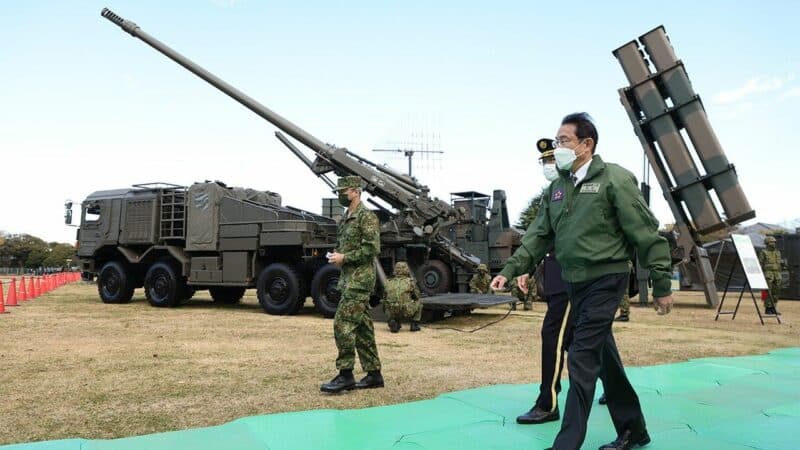Like the Military Programming Law in France, the Japanese National Security Strategy frames the country's defense effort on a multi-year 5-year scale. And as for the LPM, the document covers at the same time the budgetary, capacity, technological and even doctrinal aspects which will be implemented over the next five-year period. Traditionally, this exercise, moreover strongly constrained by the Japanese constitution and in particular its article 9 which limits the prerogatives of the Japanese self-defense forces and prohibits any action other than defensive, was not the subject of bitter discussions in parliament. , even if, under the leadership of Shinzo Abe, certain digressions were granted to the traditional Japanese defensive posture, such as the transformation of the two helicopter carrier destroyers of the Izumo class into aircraft carriers armed with F-35B fighters, a first for the Japanese fleet since the capitulation of September 2, 1945.
The new National Security Strategy, or SNS, which covers the period 2023 to 2027, has been much more debated by the Japanese political class, and by parliamentarians in particular. Indeed, responding to the ambition displayed by Prime Minister Fumio Kishida since his election a year ago, this constitutes, in several aspects, a capability and doctrinal revolution for Japanese defence. Thus, it provides for greatly increased resources for the Japanese forces, with an overall budget over 5 years of 43.000 billion yen, or €315 billion, an average annual expenditure of €63 billion per year. But, as was the case for the budget of the French armies during the current LPM, this increase will not be immediate but will increase over the whole period, so as to reach, in 2027, an annual defense effort of 2 % of the country's GDP, i.e. €100 billion per year, placing Tokyo at the foot of the world podium after the United States ($853 billion in 2023), China ($245 billion in 2023) and Russia ($125 billion in 2023).

From a doctrinal point of view, the SNS 2023-2027 is in profound rupture with the traditional posture of Tokyo in this area. First of all, it authorizes, for the first time, the Japanese self-defense forces (FADN) to have and use response capabilities capable of striking the territory of a possible aggressor, with the announced but debatable aim of to increase the dissuasive character of FADN. In order to respect the framework of article 9 of the constitution, the use of this response strike capacity has been strictly framed in the text, the self-defense forces being able to respond only against military targets, having or going to strike the Japanese territory, and this in a way strictly proportionate to the reality of the threat as well as to the operational needs. In addition, recourse to the principle of preventive strikes, as is the case for example of South Korea with the 3 Axes doctrine, is strictly prohibited.

75% of this article remains to read,
Subscribe to access it!
The Classic subscriptions provide access to
articles in their full version, and without advertising,
from 6,90 €.
Newsletter subscription
Register for the Meta-Defense Newsletter to receive the
latest fashion articles daily or weekly


[…] […]